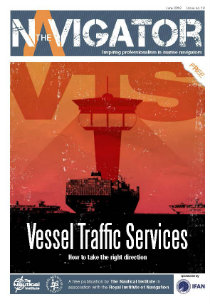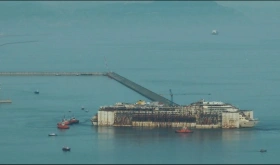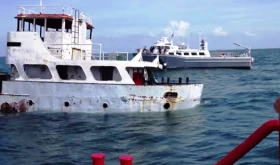The global fight against piracy in Somalia has centered on prosecuting pirates and mobilizing naval forces. But to get to the root cause of the problem, the international community must focus on helping the nation build a functional political system, according to a new World Bank study.
Three elements – political capital, manpower and financial resources – form the foundation of the hijack-for-ransom phenomenon in Somalia, where a history of inter- and intra-clan competition and European colonization has left many areas without functioning institutions, according to the study. That has allowed pirates to recruit local youth, buy guns and speedboats, and most importantly, secure coastal areas where they can anchor hijacked vessels for months or years.
Pirates in the East African nation favor places such as Puntland and Central Somalia, which provide enough political stability to do business in, but not enough state control to challenge piracy operations. They then use bribes and physical threats to tilt the balance of power between politicians and gain long-term access to the coasts.
The cost of that political operation takes up as much as 86% of the piracy proceeds, according to the study. A large sum – sometimes $300,000 per vessel – goes to government officials, businessmen, clans, militia and religious leaders as bribes and “development fees” to make sure the politicians won’t interfere in the piracy business.
Crewmembers, often hired from a particular clan or location, command significantly higher salaries than local wages. Pirates also pay more than locals do for meal services, energy, and water. Given the local custom of resource sharing, piracy proceeds trickle down to local residents and other stakeholders, creating a favorable political environment in which the pirates can operate.
The international community has mostly focused on offshore measures to fight piracy, such as increasing naval pressure and onboard security, which have helped reduce the number of hijacks. But ending piracy would call for those costly measures to be expanded and made permanent, which wouldn’t be sustainable in the long run.
Efforts that target onshore prevention, such as paying youth more to discourage them from joining the pirates, would only prompt owners to pay crew members more. Given the poverty rates among the population from which the pirates are typically recruited, owners can afford to pay pirates more without significantly hurting profit.
To end piracy off the Horn of Africa, the study urges a paradigm shift away from perpetrators and toward the enablers of piracy. With a limited number of suitable coastal areas available to anchor hijacked ships, piracy would be less profitable if Somalia removes access to safe anchorage points or significantly raises the price for coastal access.
In addition, the central government can offer incentives – along with built-in monitoring mechanisms – to encourage local stakeholders to stop pirate activity and learn from the success and failure of Afghanistan’s policies targeting opium poppy production and Colombia’s against coca production.
Source: World Bank, SAFETY4SEA


















Leave a Comment